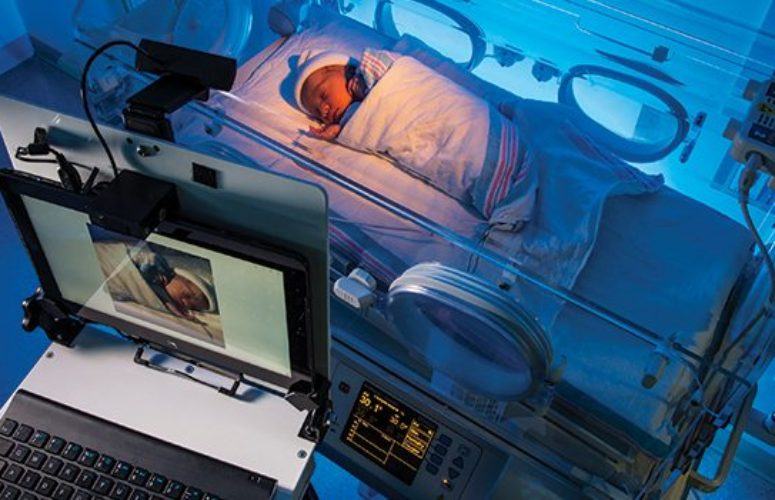
Electronic Medical Records Revolution
Healthcare providers, insurers and patients take advantage of digital health data.
By Jennifer L. Nelson, Contributing Writer On Aug 1, 2016Gone are the days of doctors sifting through endless stacks of patient medical records or spending hours filling out paperwork. Thanks to the latest advancements in electronic medical records (EMRs), the state’s doctors and hospitals have been able to continue to provide more efficient healthcare delivery throughout a patient’s entire continuum of care.
“EMRs have helped improve medical quality in a number of important ways. … They’ve helped standardize the documentation of clinical information in a manner that allows its capture and use for analysis and quality improvement projects,” confirms Dr. Edward Anselm, medical director for Health Republic Insurance of New Jersey. On the practice level, he notes, EMRs can perform crucial tasks via automated reminders, such as helping doctors ensure that a patient’s preventive screenings are up-to-date.
Along with standard medical and clinical data that would typically be gathered within a provider’s office, EMRs contain comprehensive medical histories that are designed to be shared among all practitioners who may treat a patient, from primary care doctors to specialists to nurses and even rehabilitation centers or nursing homes. “It’s really the first time we’ve seen a digitalization of healthcare information, and it has allowed us all to get connected and provide a patient with a complete continuum of care, from the hospital to the nursing home to the rehab center and back home to the primary care physician,” says Dr. Shafiq Rab, chief information officer of HackensackUMC. (It was recently announced that Hackensack University Health Network is merging with Meridian Health to form Hackensack Meridian Health.)
Indeed, EMR data can be created and managed by authorized providers and staff from various healthcare organizations, which allows a patient’s records to travel with them as they visit various medical professionals. The information can also travel to any location or state where a patient may receive healthcare services or treatments.
“The ability to share information in one continuous medical record adds a lot of value for a patient … the more eyes that can see the big picture, the higher the quality of care,” asserts Joel Taylor, senior vice president and chief information officer for CarePoint Health System.
Along with the impact these records have made in streamlining operations within a physician’s practice, hospital or nursing home, Taylor says they are playing a direct role in patient safety. “EMRs have been a key factor in reducing instances of patient death. … When a physician is in a stressful situation in the emergency room, those medical records can identify a drug reaction that could be potentially life-threatening,” he explains. “They can alert the doctor in real-time to help him or her determine the best course of action for that patient.”
However, while EMRs may improve safety outcomes and make a patient’s medical history more easily accessible to doctors, they don’t eliminate the need for physicians to continue making critical decisions for their patients. “While EMRs have changed the way physicians and clinicians practice from a workflow standpoint, doctors still have to make critical decisions every single day … we can’t expect a computer to make those kinds of decisions for them,” asserts Dr. Clyde Wesp, chief health information officer for Valley Health System, who notes that up to 99 percent of hospitals now utilize electronic health records. “The benefit is having all of the information that physicians or nurses need at their fingertips so they can use their critical thinking skills in order to make the right decisions for each individual patient.”
The benefits of EMRs reach far beyond a visit to the doctor’s office or emergency room. They have also created patient portals where physicians can remain engaged with their patients on a day-to-day basis. “Instead of just having that 15-minute encounter with their doctors, now patients have the ability to receive e-mails, charts, lab studies, and other information and share them directly with physicians they might be bringing into their continuum of care,” Taylor adds.
Of course, EMRs aren’t perfect, and the technology has continued to evolve over the past few years. “In the beginning, they actually didn’t help physicians much because EMRs were cumbersome and time-consuming to use,” he says. These days, the software companies that develop EMRs are hiring chief medical officers and contracting physicians to help developers make the software as relevant and efficient as possible. “These steps have helped EMR manufacturers deliver products that serve a digital need, meet government requirements, and improve physician workflows,” Taylor adds.
One of the other challenges revolves around how physicians should best utilize all of the medical information that’s available in an EMR without becoming overwhelmed by the data. “There are millions of pieces of information in a database, and now the challenge is how to make sense of it all, and what to do with it,” Wesp adds. “Even though it’s all important, relevant information, it’s impossible to manage the data of hundreds of patients by yourself, and know how to use it wisely.”
The answer to this problem, he says, lies in continuing to innovative and optimize the way EMRs are developed and shared across providers. “There is such a thing as having too much data; it can almost be disruptive to a physician’s workflow because no one system is perfect,” he says. “We’re focused on streamlining the process to get the right information to the right person at the right time … that way, physicians can spend their time with the patient instead of with the computer.”
Thanks to the ease through which patient information is shared via EMRs, the question of security and privacy has remained on the forefront of the healthcare industry, including insurance companies. According to Allen Karp, senior vice president of healthcare management for Horizon Blue Cross Blue Shield of New Jersey, the company has implemented a system of checks and balances that includes provider agreements and assessment of their systems to ensure the security of member data. “We feel we’ve built a word-class organization around patient security, so we’re doing as much as we possibly can in order to protect patient data,” he says.
Of course, the implementation of EMRs has impacted the state’s healthcare insurance companies in a myriad of other ways. On the positive side, EMRs have encouraged more collaboration between healthcare providers and health insurance companies. “We’re able to get a more complete view of the patient and his or her overall healthcare experience,” Karp explains.
He also notes that the availability of the data found within EMRs allows the physician in private practice to streamline many aspects of his or her day-to-day operations, such as documenting medical histories, coordinating patient information between specialists, and managing appointments. “They’ve also helped doctors avoid duplicate testing and catch adverse drug reactions. Meanwhile, we’re able to promote our medical guidelines a lot more efficiently than we could through the traditional paper system,” he adds.
According to Dr. Rab, EMRs allowed patients to begin coordinating their medical information with their smartphones for the first time; they can create daily reminders about everything from when to take their medication to how many minutes they should exercise each day. “Now, patients can play a more active role in their care, and EMRs are helping us learn how to encourage patients to change their daily behaviors in order to stay as healthy as possible,” he says. “Digitization of the healthcare experience has encouraged patient participation not only in a doctor’s office, but when they’re at home and leading their daily lives.”
From the perspective of the healthcare insurance provider, companies like Horizon also have easier access to the data they need to in order to process claims. “From the insurer’s perspective, they’ve helped us receive more efficient and effective documentation for claims,” Karp says. “Providers can document appropriate codes for certain procedures and also outline appropriate treatment plans, whereas in the past, we used to have to coordinate with a physician’s office staff in order to schedule a time to gather that kind of data.”
EMRs are playing an even more invaluable role as the healthcare insurance industry continues to evolve from a pay-per-service model to pay-per-value. “As we move towards value-based healthcare, we’re trying to work more closely with our payers in sharing the information from EMRs and coordinating claims data with clinical information in order to make the right decisions for a patient’s care,” Wesp says.
Karp notes that the Affordable Care Act has also provided grants for physicians and providers to build EMRs that create a standard for clinical data exchange, in addition to incentive programs that are built around data sharing.
But one of the most important ways that EMRs are benefitting both physicians and patients is that the records can be used not only to improve the health of individual patients, but of entire populations. “One health system having all of the information on one patient just isn’t enough; we can use the data to tap into the information of entire populations … like all cancer patients or all patients of a particular ethnic background,” Dr. Rab asserts.
Thanks to some of the latest innovations in EMR software, healthcare providers can monitor similarities between all patients with a particular condition to potentially identify new risk factors for certain diseases, or even help develop more successful treatments.
“EMRs allow us to help not only individuals, but entire populations, such as when we start finding patterns amongst all patients with diabetes,” Dr. Wesp concludes. “We believe that collaboration between skilled physicians and computer data and analytic software is truly the future of EMRs.”
Related Articles:






